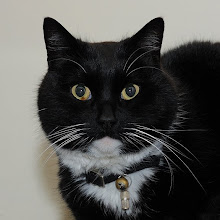On 29 January 1713 as treaty was concluded between the queen of Great Britain and the States General of the United Netherlands to guarantee the protestant succession to the crown of Great Britain, and the barrier of the States General. The treaty was signed at Utrecht.
Article 14 is of particular interest as it details aspects of mutual defense. If the States General would require so, Great Britain would send 10,000 men to their assistance. Vice versa, the States General would furnish 6,000 men (well provided with arms) to assist the her royal majesty and successors. The treaty is, e.g., found in A Complete Collection of Treaties From 1688 to 1771, available from Google Books.
The treaty would soon become useful. During the Jacobite Rebellion of 1715, Great Britain had virtually no (trained) army and 6,000 men (in probably 11 battalions) arrived from the Republic to assist. Mostly to relieve British troops in garrisons. The same would happen in 1719, when Dutch troops would even participate in the battle of Glen Shiel.
During the War of the Austrian Succession, and Jacobite Rebellion of 1745, Dutch troops would again be shipped to England. A first batch of 6,000 would arrive already somewhere during 1743 and 1744, in lieu of the danger of French attempts to invade England. This danger lapsed by 1744.
In 1745, following outbreak of the '45' rebellion, Dutch troops would again serve on British soil. This time part of the troops originated from the Dutch garrison of Tounai (Doornik). The city had capitulated to the French in May 1745, and the troops were paroled under the condition that they would not fight the French. However, their employment in Scotland was rendered incompatible with this parole, as French troops entered Scotland in December 1745. Hence the Dutch were withdrawn again.
Subscribe to:
Post Comments (Atom)




2 comments:
Hello,
The treaty obligations for Dutch or English troops to be used to support the other country fascinates me.
One of my 5 x gt grandfathers was an officer in the East India Company Army at Fort St David from about 1722 to 1746.
I have found lists of the names of all the men in his company for several years in this period, and besides the man's name is his nationality.
In many cases this was given as Dutch.
In 1701 there were 18 Dutchmen in the 290 men listed.
Dutch Sentinells 18
Hans Gosper
Hendrick Swart
Henry Peters
Hans Vancink do.
Augustine Powell
George Pyper do.
John Jurdin
Michaell Porockett do.
John Peterson do.
Peter Johnson
William Tunis
Hans Andreas
Joyce Storam
Peter Francisco
Peter Johnson Minor married BW
Sevarand Peterson
Alexander Magnus
John Johnson
George Johnson Run Jan 17th 1701/2
Adrian Johnson Do time
Hans Grocewall Died March 6th 1701/2
The odd thing is that several of the names given look more English or Scottish than Dutch.
Nick Balmer
Nick,
Many thanks for your interesting comments. Fascinating these names, and I am wondering how these people came in India. Ex-sailors or soldiers-of-fortune, or sons of traders?
Peterson looks to me Scandinavian by the way. Other names may be anglicized?
Post a Comment